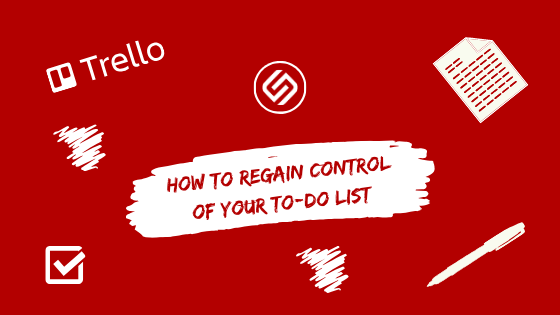Your to-do list is long and new tasks are constantly being added? With the Personal Kanban method, you can keep an overview instead of getting bogged down.
To-do lists can be terribly stressful. Because they often show you what you have not done again. For some, the hatred on the to-do list makes use of rabid means. For example, Kate Lewis, manager at the US media group Hearst, sits down once a week and writes down all of her to-dos. “A whole page in font size 8,” she said in an interview with The Cut magazine.
And when it’s done, Lewis throws the list away. “My thought behind it: The tasks that I can remember are really important. Everything else is more or less bullshit. ”For everyone whose questions remain unanswered or whose requests remain unfulfilled, she has only one word left:“ Sorry. ”
A radical approach – which few entrepreneurs are likely to be able to implement. If you want to get your long to-do list under control without offending customers and employees or letting tasks fall under the table, you can try out the Personal Kanban method.

We are working on far too many things at the same time:
Personal Kanban is a working method that was originally developed for the more flexible control of production processes in the automotive industry and is now frequently used in agile project management. The aim is to visualize project processes and tasks and to predict possible bottlenecks.
Jim Benson and Tonianne DeMaria Barry have broken this principle down in their book “Personal Kanban” to the organization of personal tasks. Personal Kanban is basically a to-do list in tabular form in which you enter your tasks. There are simple rules:
VISUALIZE YOUR WORK
Write all the tasks that are floating around in your head or that have already landed on a to-do list on a post-it. Each to-do gets its own note. You stick these notes neatly one below the other on a wall or a whiteboard. This is how the first column of your Kanban board is created: the tasks. Benson names the column “Options”, others overwrite it with “To-dos”.
The important thing is: You can see at a glance what you have to do – and you can immediately see which tasks may be related, what cannot wait, or what you can delegate.
TASKS YOU WORK ON
Limit the numbers of tasks you work on “Most of us work on far too many things at the same time,” says Benson. It is simply impossible to tackle more than three or four tasks in parallel. “They usually get bogged down, you lose focus, and don’t complete things.”
That is why Benson recommends a clear limit: Select a maximum of three tasks that you want to do. The corresponding post-it move to the second column of your board: “Work in progress” or “In work”.
If you have completed a task, the Post-it will land your boards in the third column: “Done”.
Only then can you select the next to-do from your task column and start working on it. The strict limitation helps to really focus on the task at hand. And at the same time, it shows you your own capacities – which you all too often overestimate.
CLEAR FOCUS, GREATER SATISFACTION
The effect of the method is enormous, according to Benson: “You correct the confusion in your head, you can think more about your work and in the end, you have a good feeling that you have achieved something”.
Recommended Readings: Tim Ferriss: Not-To-Do List – Things You Shouldn’t Do
Work better with Personal Kanban
It may make sense to add an “On Hold” column to the Personal Kanban Board. There you can park tasks, for example waiting for feedback from a customer or an employee.
If you travel a lot or generally prefer to organize your tasks digitally, you can work with web tools such as Trello, Meistertask, or Kanban-Tool instead of Post-it and a wall. You can use this software to create Kanban boards, and there are often free entry-level versions.











1 Comment